There’s an old line often (mis)attributed to Nazi leaders: “When I hear the word ‘culture,’ I reach for my gun.”
I think of it whenever I stumble across a news story about political consultants brainstorming ways to connect with voters culturally. Nine times out of 10, their suggestions are so cringe as to evoke an almost violent revulsion.
On Sunday I came upon this passage in a New York Times article and reached for my gun.
For now, Democratic donors and strategists have been gathering at luxury hotels to discuss how to win back working-class voters, commissioning new projects that can read like anthropological studies of people from faraway places.
The prospectus for one new $20 million effort, obtained by The Times, aims to reverse the erosion of Democratic support among young men, especially online. It is code-named SAM—short for “Speaking with American Men: A Strategic Plan”—and promises investment to “study the syntax, language and content that gains attention and virality in these spaces.” It recommends buying advertisements in video games, among other things.
The detail about a blue-collar pitch being cooked up at luxury hotels is a nice touch. You know things are bad when even the Times seems off-put by the sociological distance with which Democrats are approaching a significant part of the country, sounding more than a little like Jonah Goldberg complaining about media coverage of “conservatives in the mist.”
Some liberals read the story and also reached for their guns. “Democratic donors treating men like an endangered species on a remote island they need to study probably won’t rebuild trust,” MSNBC contributor Rotimi Adeoye tweeted. “This kind of top-down, anthropological approach misses the point: People don’t want to be decoded, they want to be understood and met where they are.” Others laughed at the idea of their party needing help to understand straight white men, historically America’s ruling class.
When I was younger, Democrats eager to connect with a demographic that was foreign to them would lapse into a patronizing ethnic or regional accent. Now they’re commissioning formal studies about “syntax.” The past was a simpler time.
It was another Times piece published a few days earlier that fleshed out what Democratic operatives have in mind by way of wooing men, particularly younger ones. “The party’s megadonors are being inundated with overtures to spend tens of millions of dollars to develop an army of left-leaning online influencers,” the paper reported. “Many [Democrats] now take it as gospel that [Donald] Trump’s victory last year came in part because he cultivated an ecosystem of supporters on YouTube, TikTok and podcasts, in addition to the many Trump-friendly hosts on Fox News.”
The task, in so many words, is to “find the next Joe Rogan.” I’m skeptical.
Autopsy retort.
The first problem with trying to close “the Rogan gap” is that it’s not clear that it matters. Democrats may think so, but our two political parties are capable of shocking ignorance about what does and doesn’t really move voters when identity is in the mix.
The most notorious example is the “autopsy” performed by the Republican National Committee after the 2012 election, in which Mitt Romney got annihilated among Latinos en route to losing handily. The RNC then deduced that his strict immigration policies had alienated too many voters in that growing demographic, and urgently warned the party to moderate on the issue if it wanted to compete nationally.
Trump ignored that advice in 2016 and doubled down on immigration enforcement, vowing to build a wall spanning the entire border with Mexico. He won. He nearly won again in 2020, then last year became the first Republican in 20 years to win the national popular vote running on a program of mass deportation. (This map speaks volumes.) In so doing, he cut the share of Latinos voting Democratic for president from 68 percent in 2012 and 70 percent in 2016 to 54 percent in 2024.
The RNC autopsy was wrong. In hindsight, it wasn’t Romney’s immigration program that scared away Hispanic voters, it was the mismatch between his business-class Republicanism and the working-class priorities of Latinos. Trump’s agenda has proven more economically and culturally populist than Mitt’s and Paul Ryan’s: He’d be “rough” with miscreants like criminals, especially those who entered the U.S. illegally, but he wouldn’t dare touch your Social Security or Medicare.
The RNC misunderstood a class disconnect between Romney and Latinos as a sort of racial disconnect coded in the issue of immigration. Why shouldn’t we assume that Democrats have misdiagnosed their “Joe Rogan problem” the same way, as a cultural disconnect that’s actually a policy problem?
After all, it’s easy to explain the 2024 results without resorting to the GOP advantage in bro-friendly podcasts. Kamala Harris did badly underperform Joe Biden with men under 30, taking 46 percent of that vote versus Biden’s 55 percent four years earlier, but why wouldn’t she? Young men don’t earn much, and what little they did earn during the previous four years had been gobbled up by inflation. Trump promised them a return to the goldilocks economy of 2019 and preached toughness in all respects, starting with immigration enforcement.
He was a famously charismatic alpha male with (unearned) cred as a business genius facing an opponent who was none of those things. Combine that with the fact that men have leaned Republican in most presidential elections over the last 50 years and, even in a Rogan-less world, there’s reason to think young men would have rallied to the president last fall.
Conversely, consider the supposed Rogan gap in a Trump-less world: If the president resigned tomorrow, how solidly pro-Republican do we think bro-casters like Joe Rogan and Dave Portnoy and Theo Von would remain during a J.D. Vance administration?
Biographically and ideologically, Vance is more authentically populist than his boss. But he lacks the intangibles that appeal to young men—vast wealth, tons of arm candy, dominance of adversaries, a relatable appetite for pugilist spectacles like pro wrestling and Ultimate Fighting. The great mystery in American politics in the second half of this decade will be how much of the current Republican coalition is held together by Trump rather than by Trumpism; Rogan won’t revert to being a Bernie bro the day after the president retires, but his vote will surely be in play post-Trump to a degree that it currently is not.
We may be closer than we think, in fact, to Republicans needing to strategize about how to hold their ground with young men. J.D. might not commission any studies on the subject, but we’ll doubtless see him ringside, grinning uncomfortably, at many a UFC event between now and 2029.
The gender gap.
Another problem with the “Rogan gap”: Isn’t it just the flip side of a “Call Her Daddy gap” for Republicans?
Call Her Daddy is the podcast that Harris appeared on last October to try to drum up turnout among Democrats. It has a huge audience of young women, and young women emphatically are the Democratic base now. Harris won 63 percent of that cohort last fall, just 3 points off Biden’s pace in 2020. Because she did, she held Trump under 50 percent of the national popular vote and finished a mere 1.5 points behind him, far closer than Romney managed with Obama in 2012.
She came within 2 points of squeaking out victories in each of the three “blue wall” swing states in the midwest that would have handed her the presidency. So why isn’t Republicans’ problem with young women considered as dire (or very nearly as dire) as Democrats’ problem with young men?
The “Rogan gap” is partly—or even largely—just a symptom of a cultural gender divide that’s grown famously wide among younger adults and cuts much deeper than podcasts. As of last month, 45 percent of men under 30 approved of Trump’s job performance; among women of the same age, only 24 percent did. The same poll found 53 percent of women aged 18-29 identify as Democrats versus 20 percent who identify as Republicans, by far the biggest partisan gap within any age/gender segment tested.
Maybe the end of Roe v. Wade is driving that. Maybe it’s a reaction to Trump’s brand of masculinity. Maybe it’s an artifact of education, as Democrats have become the party of college grads and there are a lot more of those among women than among men nowadays. Or maybe it’s a vicious circle of gender polarization: As young men have fallen behind women professionally, they’ve gravitated to a politics of nostalgia, resentment, and ostentatious masculinity, and women repelled by its excesses have raced in the opposite direction.
Showing up on Rogan’s program may help Democrats at the margins. But “syntax” isn’t going to solve all of that.
In fact, I think a party that’s dominated by college graduates and women is necessarily at a disadvantage in presidential elections, certainly in an era defined by anxiety over the cost of living and forms of disorder like immigration and crime. So long as American politics is fought on that battlefield, the side that’s viewed as “tougher” and more sympathetic to the working class is likely to win. To illustrate the point, a Democratic researcher told the Times that participants in focus groups tend to associate Republicans with “apex predators” like lions and Democrats with plodding creatures like tortoises. Which would a young, Rogan-listening bro prefer to have in charge of the military, do you think?
Liberals would do better to try to change the battlefield, or hope desperately that Trump will change it for them. And maybe he will: The more economic hardship he causes with his wheel-o’-tariffs vacillations and preposterous fiscal recklessness, the less the culture war will matter to swing voters. Liberals should avoid antagonizing those voters by taking positions in cultural disputes that don’t command a majority (a point they once seemed to grasp) and instead strain hard to reposition themselves as economic populists, as that’s their most promising opportunity to put Trump back on defense among the working class. I think they know it too, which is why their buzziest prospect for 2028 is, God help us, Alexandria Ocasio-Cortez.
The culture war is a luxury of economic prosperity, something we’ve had a lot of in America in my lifetime. As that era ends and the reckoning arrives for unfunded entitlements, massive sovereign debt, high interest rates, and a “sell America” mentality abroad, voters won’t care nearly as much about Joe Rogan as they used to.
Manufacturing cringe.
There are other reasons to dislike the idea of Democrats chasing their own Joe Rogan. For one thing, media like bro-casts that are self-consciously anti-establishment tend to be anti-establishment about everything, especially as their popularity grows and audience capture sets in. It’s not a coincidence that Rogan and Theo Von have each invited guests recently who insist on “just asking questions” about Jews.
If liberals can find someone capable of meeting young men’s appetite for alt-media without making American culture appreciably worse, more power to them, but I’m not optimistic. The dynamics are what they are. America has become a place where the less fit to govern one is, the more influence one gains in politics and political discourse. To close the Rogan gap, liberals may need to play along with that—to the country’s long-term detriment.
A left-wing Rogan recruited and promoted by Democratic fat cats would also make it harder to distinguish true grassroots populism from astroturfed content, a problem that’s become familiar as political advocacy has moved online. You never really know anymore if the person in your Twitter replies is real or a bot, whether your favorite podcaster is on Putin’s payroll or not, or increasingly whether the video you’re watching features real people or incredible simulations. Soon we may be left to wonder whether some popular new fart-joke podcast on YouTube that occasionally features pointed barbs about the president and his Cabinet is actually being bankrolled by George Soros.
That’s the other reason everyone instinctively hates the Democratic effort to connect with young men, of course. It’s not just cringey stuff like studying their syntax to relate to them or slapping a “Harris-Walz” logo on a camouflage baseball cap in hopes that rural voters will find it cool. It’s the fact that promoting and potentially funding a bunch of left-wing “influencers” to propagandize men amounts to trying to manufacture culture. It’s a Soviet impulse, a sort of Potemkin village that ends up underlining its own patheticness: If you need to go looking for a liberal Joe Rogan, it must be because your politics are too lame—at least among the target audience—to produce one organically.
Having said all that, I do see one way in which a Democratic version of Rogan might help Democrats.
It’s less a matter of that person successfully carrying left-wing politics into bro culture than successfully carrying bro culture into left-wing politics. The same Democratic analysis that called for studying the syntax of media popular with young men observed that, “Above all, we must shift from a moralizing tone,” and I think that’s correct. Well, sort of correct: There are things worth moralizing about, but our anomic country no longer appears to care about blatant corruption, to the point that many Americans now seem to resent being scolded for not caring more than they resent the corruption itself.
But yes, certainly, as the education gap between the parties has grown and Democrats have been captured by fringy intellectual orthodoxy about matters like race and gender, patience for liberal moralizing on behalf of progressive hobby horses has worn thin among the general population. The more traction a Democratic Joe Rogan ends up gaining with the young male voters whom the party covets, the more loath the party will be to alienate those voters by reverting to its old moralizing ways. If the era of Ibram X. Kendi isn’t over already, a wave of successful liberal bro-casts should finish it off.
The man and the moment.
Political culture is ultimately set by political leaders, not by the media. Democrats don’t have a “Joe Rogan gap,” they have a Barack Obama gap.
Obama was a man who met his moment, ascending at the end of a Bush dynasty that had produced an unpopular war, a global financial crisis, and a recovery disaster following Hurricane Katrina. The electorate was exhausted and wanted something radically new, and that’s certainly what he was.
Trump met his moment too. After eight years of being governed by a black president, and faced with the prospect of the first female president (who was herself part of a political dynasty), working-class whites showed up in force to restore the traditional order of American government by putting a white guy preaching “strength” in charge.
Liberals don’t need more bro-casters, they need someone who will similarly meet the moment in 2028.
That means someone young, for starters. Surely part of the reason Democrats have alienated young men is the sense that the party is run by the oldest people in America, including a now-former president who was sundowning during his time on the job. Liberals need someone who’s no older than 60 next time, preferably no older than 50.
It also means an economic populist, as small businesses and working stiffs like young men will suffer more hardship from Trump’s trade policies than some other cohorts will. A charismatic left-wing “eat the rich” demagogue would get a look next time from voters who thought right-wing populism was the solution to their problems and found out the hard way that it isn’t.
And ideally the candidate would have some credential, like time spent as a prosecutor, that lends them a bit of authority when they do feel moved to moralize. Americans are basically sociopathic now when it comes to politics, as I’ve said, but Trump’s presidency is already so mind-bendingly corrupt that even some who are currently numb to it are destined to feel exasperated by the scale of it come 2028. Democrats won’t win the election running on a “good government” platform, but a “good government” pitch as a subplot to their economic message might be the extra nudge some need to tilt against the GOP nominee, especially if it’s Donald Trump’s VP. (Or Donald Trump himself!)
Who knows? Maybe Rogan himself will be so disgusted by it that he becomes left-wing again, which would mean the liberal Joe Rogan is potentially … Joe Rogan.
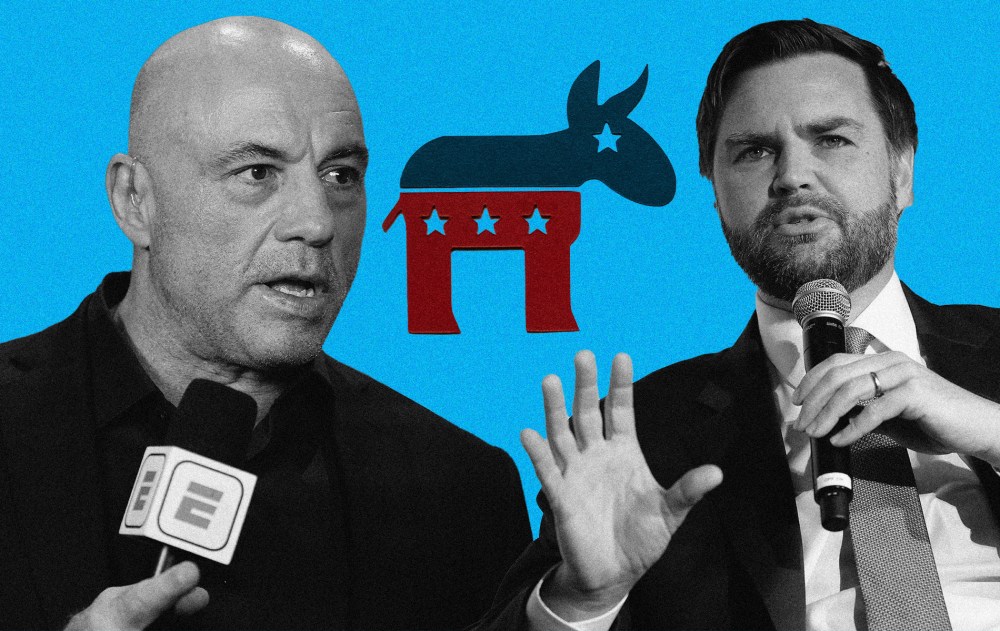

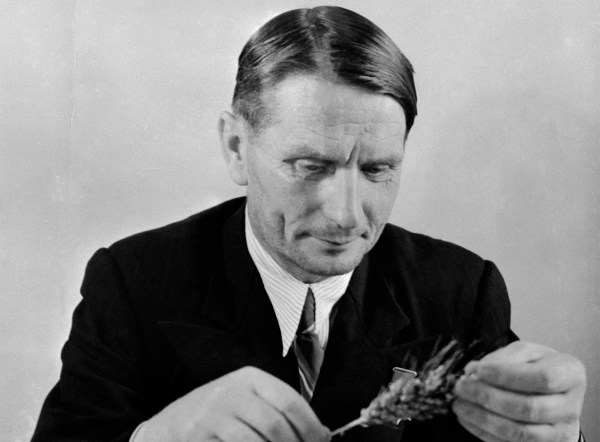

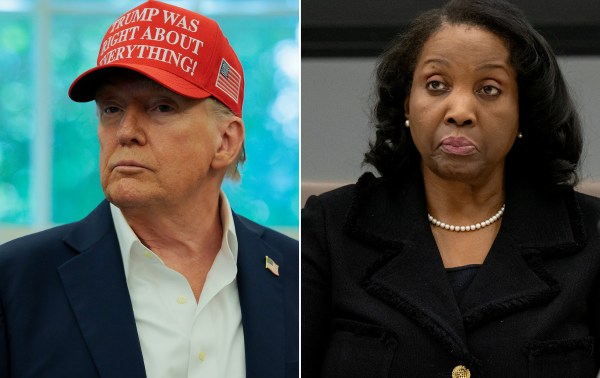
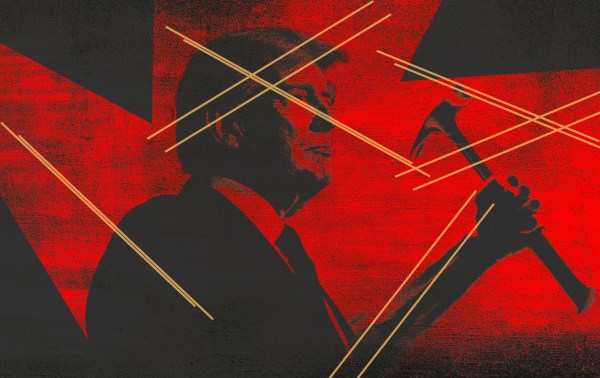
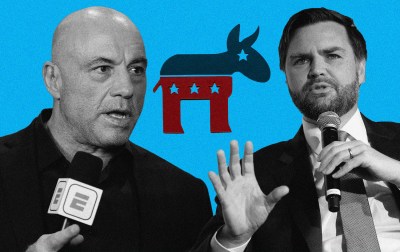
Please note that we at The Dispatch hold ourselves, our work, and our commenters to a higher standard than other places on the internet. We welcome comments that foster genuine debate or discussion—including comments critical of us or our work—but responses that include ad hominem attacks on fellow Dispatch members or are intended to stoke fear and anger may be moderated.
With your membership, you only have the ability to comment on The Morning Dispatch articles. Consider upgrading to join the conversation everywhere.